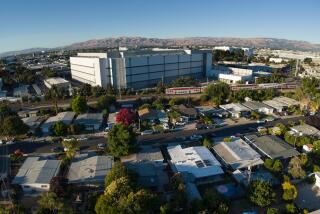Running Out of Steam : The Geysers paradigm for California: Energy’s a limited resource
- Share via
About 100 miles north of San Francisco, engineers are watching a super-heated example of how California’s booming growth often diminishes the resources that made it grow in the first place.
They also may be watching geothermal energy disappear from the list of “renewable” alternatives to oil and natural gas--so-called because these sources do not run dry over time the way an oil field does.
Starting in 1960, a division of Unocal began capturing steam from natural geysers and using it to spin turbines that generate electricity for Northern California’s biggest public utility. It seemed safe for Pacific Gas & Electric Co. to assume that the steam would keep the turbines spinning indefinitely--in any event certainly long enough to make the investment in geothermal power plants worthwhile.
The steam is created by molten rock that had thrust itself close enough to the surface to make underground water boil. One thing that made it seem safe to assume it would go on was that the hill country may have been sending up plumes of steam for as long as a million years.
But after just 25 years the Geysers, as the region is known, is running out of steam. This year, the steam level is down by nearly 20%. And PG&E; already is planning to retire four of the generating plants that have been built since 1960 and that produce 6% of the electricity used in California.
In the process, steam condensed into water that was not pumped back into the underground aquifers. As seems so obvious now, there was clearly less water down there than anyone realized. Engineers now capture some of that condensation and pump it back, but it is not nearly enough to keep steam pressure in the geothermal wells from dropping.
According to PG&E;, the generators in the Geysers area make up the biggest geothermal complex in the world. How long it will last, or whether plans that are now being drafted to try to pump treated waste water into the wells to recharge the aquifer will work, is something that only time can tell.
But if the Geysers area goes dry, it will still be useful as a warning that California cannot make it just by hoping for the best, a reminder that its future depends very much on serious growth management.
More to Read
Inside the business of entertainment
The Wide Shot brings you news, analysis and insights on everything from streaming wars to production — and what it all means for the future.
You may occasionally receive promotional content from the Los Angeles Times.









